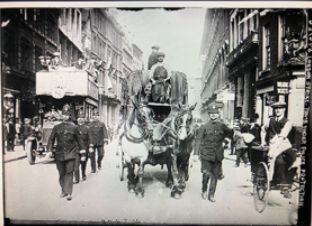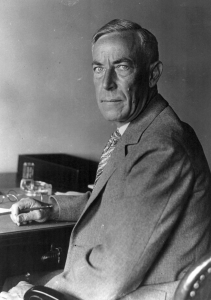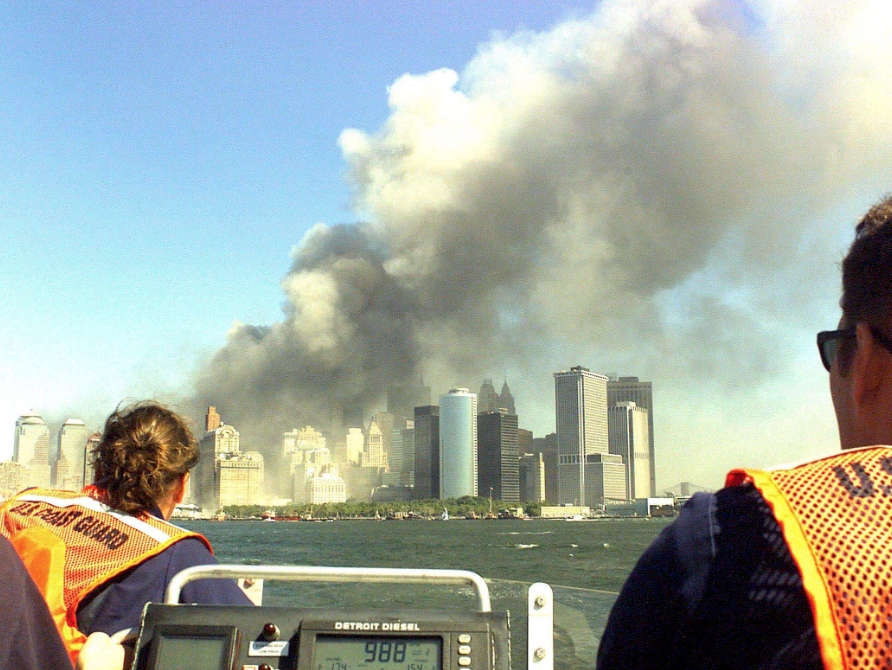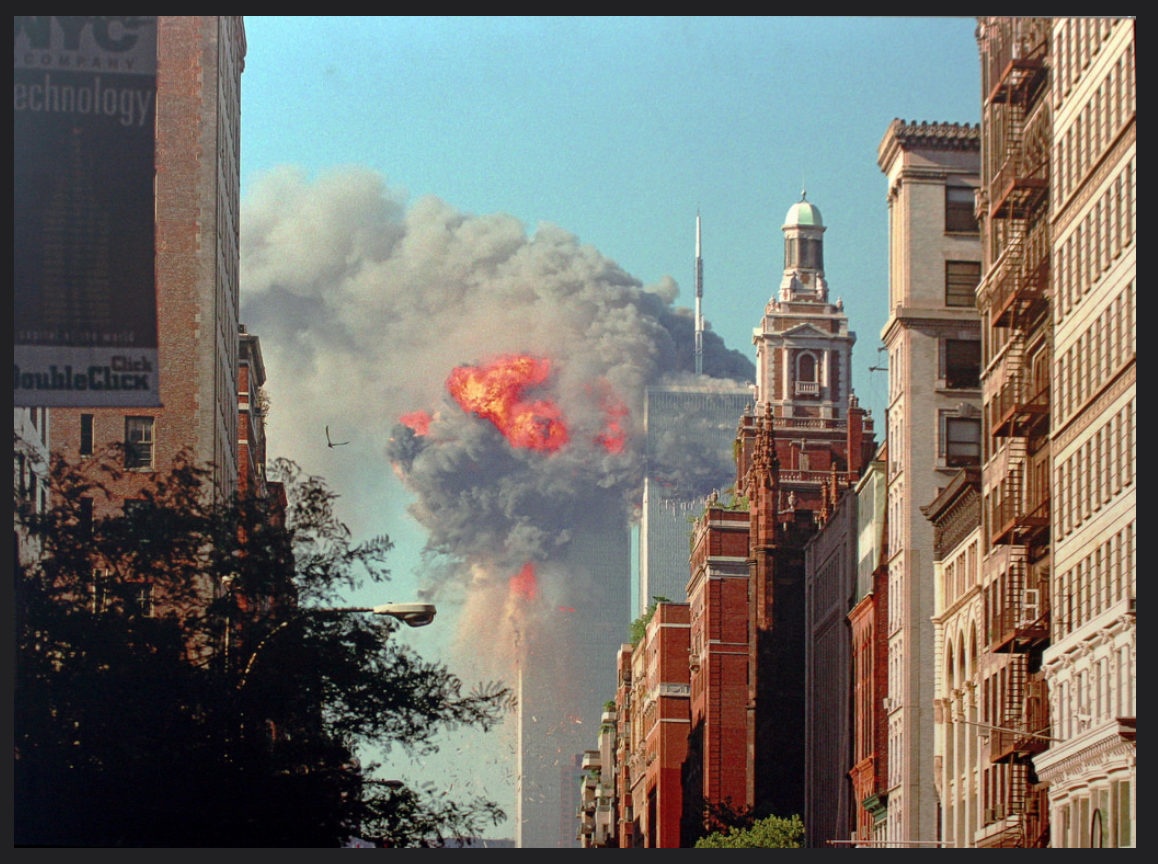6.3: Policing Eras
- Page ID
- 15960
\( \newcommand{\vecs}[1]{\overset { \scriptstyle \rightharpoonup} {\mathbf{#1}} } \)
\( \newcommand{\vecd}[1]{\overset{-\!-\!\rightharpoonup}{\vphantom{a}\smash {#1}}} \)
\( \newcommand{\id}{\mathrm{id}}\) \( \newcommand{\Span}{\mathrm{span}}\)
( \newcommand{\kernel}{\mathrm{null}\,}\) \( \newcommand{\range}{\mathrm{range}\,}\)
\( \newcommand{\RealPart}{\mathrm{Re}}\) \( \newcommand{\ImaginaryPart}{\mathrm{Im}}\)
\( \newcommand{\Argument}{\mathrm{Arg}}\) \( \newcommand{\norm}[1]{\| #1 \|}\)
\( \newcommand{\inner}[2]{\langle #1, #2 \rangle}\)
\( \newcommand{\Span}{\mathrm{span}}\)
\( \newcommand{\id}{\mathrm{id}}\)
\( \newcommand{\Span}{\mathrm{span}}\)
\( \newcommand{\kernel}{\mathrm{null}\,}\)
\( \newcommand{\range}{\mathrm{range}\,}\)
\( \newcommand{\RealPart}{\mathrm{Re}}\)
\( \newcommand{\ImaginaryPart}{\mathrm{Im}}\)
\( \newcommand{\Argument}{\mathrm{Arg}}\)
\( \newcommand{\norm}[1]{\| #1 \|}\)
\( \newcommand{\inner}[2]{\langle #1, #2 \rangle}\)
\( \newcommand{\Span}{\mathrm{span}}\) \( \newcommand{\AA}{\unicode[.8,0]{x212B}}\)
\( \newcommand{\vectorA}[1]{\vec{#1}} % arrow\)
\( \newcommand{\vectorAt}[1]{\vec{\text{#1}}} % arrow\)
\( \newcommand{\vectorB}[1]{\overset { \scriptstyle \rightharpoonup} {\mathbf{#1}} } \)
\( \newcommand{\vectorC}[1]{\textbf{#1}} \)
\( \newcommand{\vectorD}[1]{\overrightarrow{#1}} \)
\( \newcommand{\vectorDt}[1]{\overrightarrow{\text{#1}}} \)
\( \newcommand{\vectE}[1]{\overset{-\!-\!\rightharpoonup}{\vphantom{a}\smash{\mathbf {#1}}}} \)
\( \newcommand{\vecs}[1]{\overset { \scriptstyle \rightharpoonup} {\mathbf{#1}} } \)
\( \newcommand{\vecd}[1]{\overset{-\!-\!\rightharpoonup}{\vphantom{a}\smash {#1}}} \)
\(\newcommand{\avec}{\mathbf a}\) \(\newcommand{\bvec}{\mathbf b}\) \(\newcommand{\cvec}{\mathbf c}\) \(\newcommand{\dvec}{\mathbf d}\) \(\newcommand{\dtil}{\widetilde{\mathbf d}}\) \(\newcommand{\evec}{\mathbf e}\) \(\newcommand{\fvec}{\mathbf f}\) \(\newcommand{\nvec}{\mathbf n}\) \(\newcommand{\pvec}{\mathbf p}\) \(\newcommand{\qvec}{\mathbf q}\) \(\newcommand{\svec}{\mathbf s}\) \(\newcommand{\tvec}{\mathbf t}\) \(\newcommand{\uvec}{\mathbf u}\) \(\newcommand{\vvec}{\mathbf v}\) \(\newcommand{\wvec}{\mathbf w}\) \(\newcommand{\xvec}{\mathbf x}\) \(\newcommand{\yvec}{\mathbf y}\) \(\newcommand{\zvec}{\mathbf z}\) \(\newcommand{\rvec}{\mathbf r}\) \(\newcommand{\mvec}{\mathbf m}\) \(\newcommand{\zerovec}{\mathbf 0}\) \(\newcommand{\onevec}{\mathbf 1}\) \(\newcommand{\real}{\mathbb R}\) \(\newcommand{\twovec}[2]{\left[\begin{array}{r}#1 \\ #2 \end{array}\right]}\) \(\newcommand{\ctwovec}[2]{\left[\begin{array}{c}#1 \\ #2 \end{array}\right]}\) \(\newcommand{\threevec}[3]{\left[\begin{array}{r}#1 \\ #2 \\ #3 \end{array}\right]}\) \(\newcommand{\cthreevec}[3]{\left[\begin{array}{c}#1 \\ #2 \\ #3 \end{array}\right]}\) \(\newcommand{\fourvec}[4]{\left[\begin{array}{r}#1 \\ #2 \\ #3 \\ #4 \end{array}\right]}\) \(\newcommand{\cfourvec}[4]{\left[\begin{array}{c}#1 \\ #2 \\ #3 \\ #4 \end{array}\right]}\) \(\newcommand{\fivevec}[5]{\left[\begin{array}{r}#1 \\ #2 \\ #3 \\ #4 \\ #5 \\ \end{array}\right]}\) \(\newcommand{\cfivevec}[5]{\left[\begin{array}{c}#1 \\ #2 \\ #3 \\ #4 \\ #5 \\ \end{array}\right]}\) \(\newcommand{\mattwo}[4]{\left[\begin{array}{rr}#1 \amp #2 \\ #3 \amp #4 \\ \end{array}\right]}\) \(\newcommand{\laspan}[1]{\text{Span}\{#1\}}\) \(\newcommand{\bcal}{\cal B}\) \(\newcommand{\ccal}{\cal C}\) \(\newcommand{\scal}{\cal S}\) \(\newcommand{\wcal}{\cal W}\) \(\newcommand{\ecal}{\cal E}\) \(\newcommand{\coords}[2]{\left\{#1\right\}_{#2}}\) \(\newcommand{\gray}[1]{\color{gray}{#1}}\) \(\newcommand{\lgray}[1]{\color{lightgray}{#1}}\) \(\newcommand{\rank}{\operatorname{rank}}\) \(\newcommand{\row}{\text{Row}}\) \(\newcommand{\col}{\text{Col}}\) \(\renewcommand{\row}{\text{Row}}\) \(\newcommand{\nul}{\text{Nul}}\) \(\newcommand{\var}{\text{Var}}\) \(\newcommand{\corr}{\text{corr}}\) \(\newcommand{\len}[1]{\left|#1\right|}\) \(\newcommand{\bbar}{\overline{\bvec}}\) \(\newcommand{\bhat}{\widehat{\bvec}}\) \(\newcommand{\bperp}{\bvec^\perp}\) \(\newcommand{\xhat}{\widehat{\xvec}}\) \(\newcommand{\vhat}{\widehat{\vvec}}\) \(\newcommand{\uhat}{\widehat{\uvec}}\) \(\newcommand{\what}{\widehat{\wvec}}\) \(\newcommand{\Sighat}{\widehat{\Sigma}}\) \(\newcommand{\lt}{<}\) \(\newcommand{\gt}{>}\) \(\newcommand{\amp}{&}\) \(\definecolor{fillinmathshade}{gray}{0.9}\)Political Era, the Reform Era, and the Community Era. Through the microscope of seven topical areas, listed below, an understanding of how policing evolved begins.
- Authorization
- Function
- Organization
- Demand
- Environment
- Tactics
- Outcomes
Political Era: The political era is often referred to as the first era of policing in the United States and it began around the 1840s with the creation of the first bona fide police agencies in America [2]
- New York Police Founded 1845
- Chicago Police Founded 1855
- Philadelphia Police Founded 1751
- Jacksonville Police Founded 1822
- Indianapolis Police Founded 1850’s
- Detroit Police Founded 1865
- Portland Police Founded 1870
- Eugene Police Founded 1863
- Jackson County, Oregon Police Founded 1852

NOTE: the word policeman/men is utilized in this era/context, because during this time period, women were not allowed in the profession, and if they were accepted it was under a microscopic view of certain stereotypical matronly duties to be performed). In fact, Black policemen were rarely hired. Black policemen made their way into policing in the late 1800s, but when the Civil Rights Act of 1875 was ruled unconstitutional, Black officers all but disappeared from policing until the 1950s.
1957 annual wage for a police patrolman – Milwaukee Police Department: $5,405.40
1957 Annual Report Milwaukee Police Department https://city.milwaukee.gov/ImageLibrary/Groups/…/Archive…/1957AnnualReport.pdf
2018 annual wage for police patrolman- Milwaukee Police Department:
$57,291.00
Milwaukee, Wisconsin- State website city.milwaukee.gov/fpc/Jobs/Police-Officer.html
Oregon State Police- Oregon.gov website www.oregon.gov/osp/RECRUIT/Pages/salary_benefits.aspx
Reform Era: Because the Political Era of policing ended up being laced with corruption and brutality, the panacea for the negativity became the Reform Era. One police chief was largely at the forefront of this new era, Chief August Vollmer. He is considered the pioneer for police professionalism. August Vollmer was the Chief of Police in Berkeley, California (1905-1932). He had many new beliefs about policing that would forever change the world of policing:
- Candidates who were testing to be in policing had to undergo psychological and intelligence tests
- Detectives would utilize scientific methods in their investigations, through forensic laboratories
- Recruits, for the first time, would attend a training academy (police did not receive any formal training prior to August Vollmer’s arrival)
- Assisted with the development of the School of Criminology at the University of California at Berkeley
[3] He knew in order to rehabilitate offenders, police officers needed to look behind the handcuffs and start looking into the person and reason behind the behavior. [4]

The Community Era- 1980s to 2000: In the 1960s and 1970s the crime rate double and it was a time of unrest and eye-opening policing issues. Civil rights movements spread across America and the police were on the front lines. Media coverage showed controversial contacts between white male officers and African American citizens, which further irritated race relations in policing. The U.S. Supreme Court handed down the landmark Miranda v. Arizona and Mapp v. Ohio decisions. The writing was on the wall that the policing environment had to change. The days of answering everything with bullying or police professionalism were no more. The Community Era of policing began and those in police administration hoped this new era held the answers to fixing decades-old issues. The police needed help and they would turn towards the community and its citizens for assistance.
Community Era Example
The Homeland Security Era- 2001 to Present: On September 11th, 2001, when terrorists hijacked airplanes and flew them into the World Trade Center buildings and Pentagon in the United States, a fourth era of policing, the era of Homeland Security, was said to emerge. [5] The long-lasting repercussions of this terrorist act would forever change life for Americans, but the daily activities of all policing departments. There is some debate in the field as to the order of policing eras and what they should be called. Some scholars list the policing eras as:
- Pre-Policing Era
- Political Era
- Reform Era
- Community Era
- Political Era
- Reform Era
- Community Era
- Homeland Security Era


Homeland Security Era Examples
- Greene, J. R., & Mastrofsky, S. D. (Eds.) (1991). Kelling, G.L., & Moore, M. H. (1991). From political to reform to community: The evolving strategy of the police. In Community Policing: Rhetoric or Reality. New York: Paeger. ↵
- Oliver, W. M. (2006). The fourth era of policing: Homeland security. International Review of Law, Computers & Technology↵
- Reppetto, T.A. (1978). The Blue Parade. New York: Free Press. ↵
- Reppetto, T.A. (1978). The Blue Parade. New York: Free Press. ↵
- Oliver, W. M. (2006). The fourth era of policing: Homeland security. International Review of Law, Computers & Technology.↵
- Oliver, W. M. (2006). The fourth era of policing: Homeland security. International Review of Law, Computers & Technology. ↵


